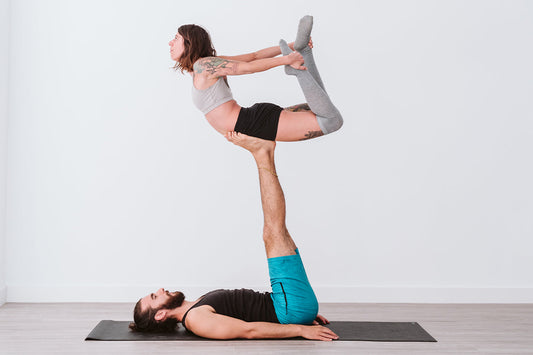Yoga is far more than just physical postures; it is a way of life that nurtures the body, mind, and spirit. Rooted in ancient wisdom, the Eight Limbs of Yoga, as outlined in Patanjali’s Yoga Sutra, provide a structured path toward self-awareness and inner peace. This eightfold path offers a comprehensive guide to leading a balanced and meaningful life by integrating ethical principles, disciplined practices, and meditative techniques. Understanding each limb helps individuals cultivate mindfulness, presence, and harmony in their daily lives.
Understanding the Eight Limbs of Yoga
The Eight Limbs of Yoga serve as stepping stones that guide practitioners toward a deeper connection with themselves and the world around them. Each limb plays a crucial role in physical, mental, emotional, and spiritual well-being.
- Yama (Ethical Restraints)
Yama refers to the moral principles that shape how individuals interact with others. It consists of five key values:
-
- Satya (Truthfulness): Encouraging honesty in thoughts, words, and actions.
- Asteya (Non-Stealing): Supporting a mindset of contentment and integrity.
- Ahimsa (Non-Violence): Aiding kindness and compassion in all interactions.
- Brahmacharya (Moderation): Cultivating self-discipline and mindful consumption.
- Aparigraha (Non-Possessiveness): Letting go of material attachments and greed.
- Niyama (Self-Discipline)
Niyama focuses on self-care and personal growth, guiding individuals toward inner harmony:
-
- Shaucha (Purity): Keeping the body, mind, and surroundings clean.
- Santosha (Contentment): Finding peace in the present moment.
- Tapas (Self-Discipline): Committing to personal transformation through practice.
- Svadhyaya (Self-Study): Gaining self-awareness through reflection and study.
- Ishvarapranidhana (Surrender): Trusting in the flow of life.
- Asana (Physical Postures)
Asanas, or yoga postures, help maintain a strong and flexible body, creating the foundation for inner balance. These movements not only cultivate physical strength but also prepare the body for deeper meditative practices. The discipline of asana practice teaches patience, resilience, and presence.
- Pranayama (Breath Control)
Pranayama refers to breathing exercises that help regulate the life force, or prana, within the body. By practicing controlled breathing techniques, individuals can help maintain emotional stability, mental clarity, and overall well-being. Techniques such as alternate nostril breathing and diaphragmatic breathing bring greater awareness to the breath, linking the body and mind.
- Pratyahara (Withdrawal of the Senses)
Pratyahara is the practice of turning inward by withdrawing from external distractions. This allows individuals to tune in to their inner world, helping them cultivate self-awareness and emotional balance. By learning to detach from sensory overload, practitioners develop a sense of inner calm and clarity.
- Dharana (Concentration)
Dharana involves single-pointed focus, training the mind to remain steady on a single thought or object. Whether concentrating on the breath, a mantra, or a candle flame, this practice builds mental discipline and strengthens attention. Through consistent focus, individuals can navigate life’s challenges with greater ease and awareness.
- Dhyana (Meditation)
Dhyana refers to a deep meditative state where the mind is calm, still, and fully absorbed. Unlike concentration, which requires effort, meditation unfolds naturally when the mind becomes effortlessly immersed in the present moment. Regular meditation practice fosters inner stillness and clarity, leading to a profound sense of peace.
- Samadhi (State of Oneness)
The final limb, Samadhi, is a state of profound inner connection and unity. It is an experience of complete absorption where the individual transcends the limitations of the ego and feels at one with the universe. While this state may take years of dedicated practice, each step along the eightfold path brings practitioners closer to self-realization and inner fulfillment.
Integrating the Eight Limbs into Daily Life
The Eight Limbs of Yoga are not merely philosophical concepts but practical tools that can be applied to everyday life. Here are some simple ways to incorporate them:
- Practice Satya (Truthfulness) by being honest in communication and thoughts.
- Embrace Santosha (Contentment) by appreciating the present moment instead of longing for more.
- Cultivate Dharana (Concentration) by setting aside time for focused activities such as journaling or mindful breathing.
- Engage in Pranayama (Breath Control) exercises to help ease emotional imbalances and bring mental clarity.
- Dedicate time to Dhyana (Meditation) to nurture inner peace and self-awareness.
Conclusion
The Eight Limbs of Yoga offer a timeless guide to cultivating a life of balance, mindfulness, and inner harmony. By embracing these principles, individuals can foster self-awareness and cultivate a deeper connection with themselves and the world around them. Whether through ethical living, physical postures, or meditative practices, each step on this journey brings one closer to a state of wholeness and fulfillment. Through consistent practice, yoga becomes more than just an exercise—it becomes a way of life, helping to create a sense of peace and purpose that extends beyond the mat.






